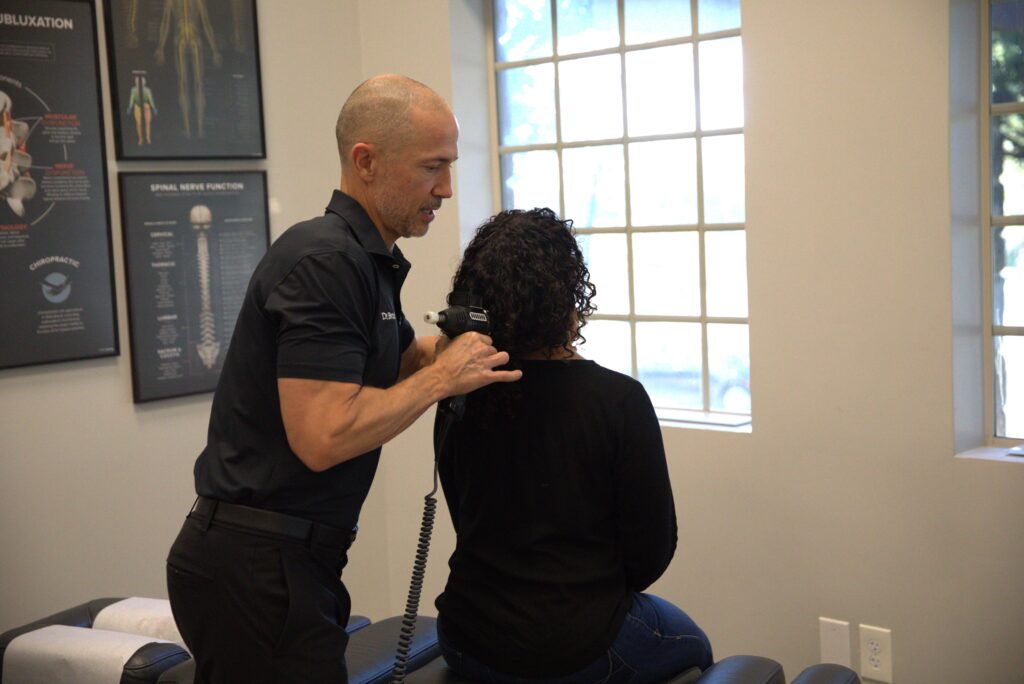Understanding Psoas Muscle and Its Role in Lower Back Pain
The psoas muscle, comprising the iliacus and psoas major, is situated deep within the abdominal cavity, connecting the lumbar spine to the femur. It plays a pivotal role in stabilizing the spine and aiding hip flexion.
The psoas serves crucial functions beyond movement. It’s integral to posture, providing support to the lower spine, and influences core strength. When the psoas muscle tightens due to prolonged sitting, stress, or lack of regular movement, it can pull the lower spine forward, leading to discomfort and lower back pain.
An optimally functioning psoas muscle not only aids in movement but also contributes to overall well-being. Its health affects posture, mobility, and even emotional well-being by reducing stress on the lower back.
Identifying Lower Back Pain Caused by Psoas Tightness
Understanding the specific signs and differentiating factors of lower back pain related to psoas muscle tightness is crucial for effective treatment and relief.
Symptoms and Signs of Psoas-Related Lower Back Pain
Symptoms may manifest as a dull ache in the lower back, discomfort while standing or walking, or restriction in hip movement, often worsening after long periods of sitting.
Diagnostic Measures for Psoas-Induced Back Pain
Professionals in lower back pain treatment may use a range of assessments, including physical evaluations, range-of-motion tests, and medical history analysis, to diagnose lower back pain stemming from psoas muscle tightness.
Differentiating Psoas-Related Pain from Other Sources
Distinguishing psoas-induced pain from other back issues is vital. Professionals analyze specific symptoms and conduct thorough examinations to pinpoint psoas-related discomfort.
Importance of Psoas Exercises in Alleviating Lower Back Pain
Psoas-targeted exercises play a pivotal role in addressing lower back discomfort, offering multifaceted benefits beyond immediate pain relief, extending to improved mobility, posture, and overall physical wellness.
Benefits of Targeted Psoas Muscle Workouts
Engagement in specialized exercises specifically designed for the psoas muscle serves as a restorative measure, aiding in the re-establishment of its natural length and flexibility. By addressing imbalances within the body, these exercises effectively reduce tension and alleviate lower back discomfort. Additionally, these workouts promote circulation, which assists in delivering essential nutrients to the muscle, aiding in its repair and overall health.
Strengthening exercises targeting the psoas muscle are instrumental in stabilizing the spine and enhancing core strength. By reinforcing the supporting structures around the spine, these exercises effectively distribute pressure and minimize stress on the lower back. This not only alleviates existing chronic pain but also works preventatively against future discomfort or injuries. The psoas, as a core muscle, plays a crucial role in maintaining proper alignment, and its strengthened condition significantly contributes to improved posture, reducing strain on the lumbar area.
How Psoas Stretching Can Enhance Flexibility and Reduce Pain
Incorporating dedicated stretching routines tailored to the psoas muscle can substantially augment its flexibility. These stretching exercises extend the muscle to its full range of motion, promoting increased flexibility and elasticity, thus reducing stiffness and mitigating lower back pain. By performing these stretches regularly, individuals can significantly improve their overall flexibility and range of motion, aiding in the prevention of psoas-related discomfort and enhancing mobility for everyday activities.
Effective Psoas Exercises for Lower Back Pain Relief
Psoas-focused exercises encompass a diverse range of movements and stretches, each tailored to alleviate lower back pain while simultaneously fostering a healthier spine and enhanced well-being.
Dynamic Psoas Stretches for Flexibility and Pain Reduction
Dynamic stretching exercises, such as leg raises and lunges, are highly effective in elongating the psoas muscle. These stretches actively engage the muscle through a controlled range of motion, promoting flexibility and releasing tension buildup. By performing these stretches regularly, individuals can experience notable improvements in flexibility, resulting in reduced lower back pain and increased comfort during daily activities.
Strengthening Exercises to Support Psoas Health and Back Relief
Specific strengthening exercises, like hip bridges and leg lifts, are instrumental in not only fortifying the psoas muscle but also in stabilizing the spine. These exercises aid in the development of muscular strength around the lower back and core, effectively supporting the spine’s structural integrity. This not only provides relief from chronic lower back discomfort but also reduces vulnerability to potential injuries or strain. The strengthened psoas muscle contributes significantly to improved posture and spinal alignment, thus diminishing strain on the lower back area and enhancing overall back health.
Mind-Body Practices: Yoga and Pilates for Psoas Wellness
Mind-body practices like yoga and Pilates incorporate a holistic approach to psoas wellness. These disciplines emphasize controlled movements and proper alignment, incorporating specific poses and exercises that engage and support the psoas muscle. By integrating breathing techniques with precise movements, these practices promote relaxation, reduce tension in the psoas, and enhance overall flexibility. The mind-body connection inherent in these practices not only addresses physical discomfort but also encourages mental relaxation, contributing to an overall sense of well-being and reduced lower back pain.
Incorporating Psoas Exercises into Daily Routine
Incorporating psoas exercises into one’s daily routine is essential for sustained relief from lower back pain. Integrating these exercises seamlessly into existing fitness regimens fosters consistency and maximizes their effectiveness.
Integrating psoas-specific exercises into existing workout routines can be simplified by dedicating specific days or segments for these exercises. Coupling psoas workouts with complementary exercises, such as yoga or core workouts, not only streamlines the routine but also enhances the overall benefits.
Psoas Exercises at Home: Creating an Effective Workout Plan
Creating a personalized psoas exercise plan for home involves identifying convenient time slots, selecting a comfortable space, and crafting a routine that aligns with personal goals. Additionally, using readily available household items or exercise equipment tailored for psoas workouts enhances the effectiveness of at-home exercises.
Psoas Exercises for Various Lifestyles and Fitness Levels
Psoas exercises can be adapted to suit diverse lifestyles and fitness levels. Tailoring exercises based on individual capabilities, whether through modified movements or gradually increasing intensity, ensures inclusivity and allows individuals to engage in these exercises irrespective of their fitness background or daily routine.
Insights from Professionals: Expert Perspectives on Psoas-Related Pain Relief
Expert perspectives from healthcare professionals, physical therapists, or fitness trainers specializing in psoas-related pain relief offer invaluable insights. Their expertise delves into the science behind psoas exercises, practical tips for implementation, and the significance of a structured routine for sustainable relief from lower back discomfort.
The Role of Chiropractic Care in Psoas Health
Chiropractic care stands as a valuable adjunct to traditional exercises, playing a pivotal role in optimizing the health of the psoas muscle and alleviating lower back discomfort.
Chiropractors employ a comprehensive approach that focuses on spinal alignment, muscle balance, and overall musculoskeletal health. When addressing lower back pain originating from the psoas muscle, chiropractors perform thorough assessments to identify imbalances, misalignments, or tension in the spine that might impact the psoas.
Psoas-Specific Chiropractic Techniques
Chiropractors utilize specialized techniques to target the psoas muscle directly. These may include soft tissue manipulation, gentle stretching, or trigger point therapy aimed at releasing tension within the psoas. By applying precise and controlled pressure, chiropractors aim to restore flexibility and alleviate tightness within the muscle.
Benefits of Chiropractic Care for Psoas-related Discomfort
Chiropractic care not only addresses acute discomfort but also aids in the prevention of future psoas-related issues. Through a series of targeted adjustments and rehabilitative exercises, chiropractors not only alleviate immediate pain but also support the psoas in maintaining its proper function, fostering improved mobility and flexibility in the long run.
Complementary Nature of Chiropractic Care and Psoas Exercises
The synergy between chiropractic care and psoas exercises is particularly noteworthy. While chiropractic adjustments target immediate issues within the psoas and spine, consistent psoas exercises complement these treatments by fortifying the muscle and supporting spinal health over time.
Chiropractic care, when integrated into a holistic wellness regimen alongside dedicated exercises, proves instrumental in managing psoas-related lower back pain and promoting optimal musculoskeletal health.





